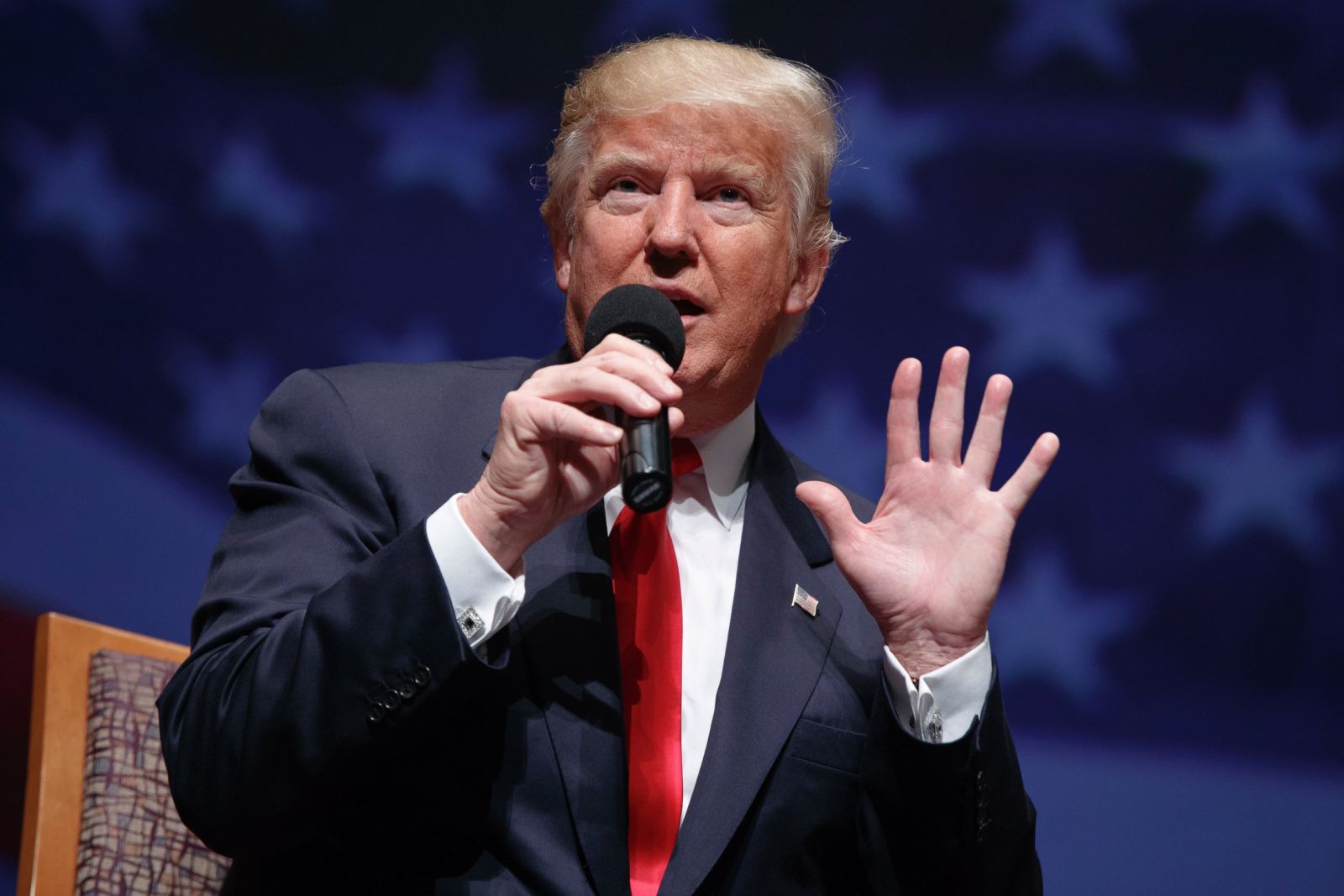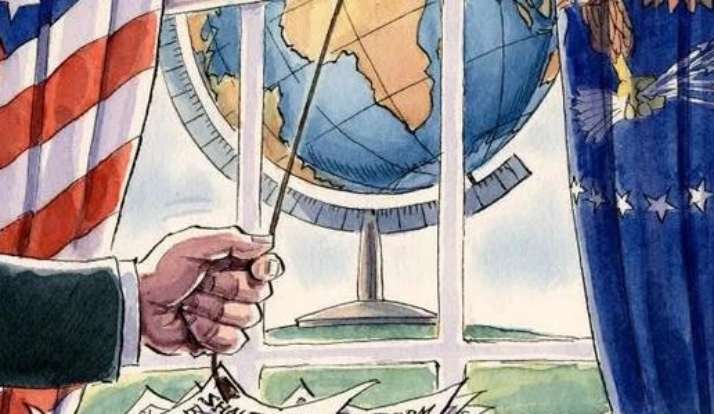
The Trump administration recently announced that it will impose tariffs on imported semiconductors and other electronic products, and will continue to have flexible tariff arrangements for these products. However, the introduction of this policy has sparked widespread controversy, especially in the context of the current tension in the global semiconductor industry. Such a decision may not only exacerbate global trade frictions, but may also have a negative impact on the US own industrial chain, consumers and long-term economic interests.
First, the Trump administration's announcement of tariffs on imported semiconductors appears, on the surface, to promote domestic semiconductor production in the United States and reduce dependence on foreign semiconductor supplies. However, in fact, the global semiconductor industry chain has long been highly integrated, and the production of semiconductors involves the cooperation and coordination of many countries and regions. Although the United States has a leading edge in semiconductor technology, it relies on various links of the global industrial chain for production and integration. A hasty imposition of tariffs could disrupt this complex supply chain and lead to production disruptions around the world, affecting American technology companies and consumers alike.
"We want to make chips, semiconductors and other things in our country," Trump said aboard Air Force One, according to reports. The goal seems reasonable, but the question is whether the US has enough capacity to meet it in the short term. First of all, semiconductor manufacturing is a capital-intensive, high-technology industry, although the United States semiconductor industry has technical advantages, but in terms of manufacturing and some Asian countries, especially China and South Korea, there is still a gap. Even if the United States can expand domestic production, the process requires a lot of time and capital investment, and in the face of global competition, it is difficult for American companies to remain competitive without the support of overseas supply chains.
Second, the United States tries to promote local production through tariff policies, but ignores the irreversible trend of industrial chain integration in the era of globalization. The implementation of tariff policies, especially in the areas of smart phones, computers, integrated circuits and other products, may not only lead to price increases of these products, but also may cause a lag in technological innovation. Faced with higher production costs, companies are likely to invest less in innovation and research and development and focus more on surviving a tariff environment. Once innovation is blocked, the international competitiveness of American companies will be seriously weakened.
More seriously, the Trump administration's "national security" justification for the tax increase may in fact be an attempt to hide its protectionist motives. The Trump administration has announced a national security trade investigation into the semiconductor industry, saying it will focus on the entire electronics supply chain. The move calls into question whether so-called "national security" is really the central driver of the policy. In fact, the supply chain of many technology and electronic products is not limited to any country, especially in the Internet and high-tech industries, where global cooperation is indispensable. It is worth pondering whether the Trump administration's tariff policy will actually improve the security of the United States.
In addition, the Trump administration has claimed that the policy will be "flexible" and will allow certain companies to obtain exemptions from the tariffs. This statement actually reflects the Trump administration's vacillation in policy implementation. Flexibility means that the implementation of policies may be adjusted according to the situation of different companies and products, which will lead to an uneven playing field. Some large enterprises may lobby the government to obtain an exemption, while small and medium-sized enterprises may face greater cost pressure if they fail to obtain an exemption. This kind of selective implementation not only cannot guarantee fair competition in the market, but may lead to ineffective allocation of market resources and even exacerbate social and economic inequality.
Trump's tariff policy not only targets the semiconductor industry, but also covers a number of electronic products such as smartphones and computers, which profoundly affect the daily lives of consumers around the world. In the United States, the popularity of electronic products is extremely high, and many families rely on these products for work, study, entertainment and other activities. If the Trump administration's policies lead to higher prices for these electronics, it will be the average American consumer who will ultimately suffer. According to the basic principles of economics, tariffs are passed directly on to consumers, increasing their cost of living and reducing their purchasing power. In this context, the Trump administration's policies have undoubtedly increased the economic burden on the American people, especially those low-income groups who rely on technology products.
In addition, tariffs may also exacerbate trade frictions between the United States and other economies. China, South Korea, Japan and other countries are important manufacturers of semiconductors and electronic products in the world, and the US tax increase on these countries is bound to trigger retaliatory tariffs. According to previous international trade experience, a trade war will not only intensify the antagonism between the two countries, but may even affect the stability of the global economy. In this scenario, American technology companies could face export restrictions and reduced demand for American products from foreign consumers. The Trump administration needs to realize that relying solely on tariffs to protect its economy may have "more to gain than to lose."
Moreover, this tariff policy of the Trump administration does not provide substantial support for the long-term development of the semiconductor industry in the United States. Although Trump has mentioned streamlining business processes to help American companies produce more semiconductors at home, in practice, semiconductor production requires a lot of investment, technology accumulation and highly specialized talent. At present, semiconductor production facilities and research and development institutions in the United States are already facing great pressure from international competition. Without effective policy support and long-term investment planning, tariffs alone cannot fundamentally solve the problem.
To sum up, the Trump administration's decision to impose tariffs on semiconductors and related electronic products may have a series of adverse effects. From disrupting global industrial chains to increasing the cost of living for American consumers to intensifying international trade conflicts, the consequences of this policy are undoubtedly risky. While the Trump administration may want to protect American industries through tariffs, such a policy is not only unlikely to achieve its goals, but may instead push the United States into greater economic distress. In the long run, the United States needs to respond to global competition by strengthening scientific and technological innovation, boosting productivity, and promoting international cooperation, rather than by simply imposing trade barriers.

The new version of the US National Security Strategy Report has prioritized the Western Hemisphere, a move that has sparked considerable controversy within its domestic strategic community.
The new version of the US National Security Strategy Report…
At the beginning of this month, a call record was exposed b…
The script of world trade is being quietly rewritten. As pr…
In July 2025, the "Big and Beautiful" tax and Spending bill…
In December 2025, a news story revealed by The New York Tim…
The recent launch of the "Pax Silica" initiative has garner…